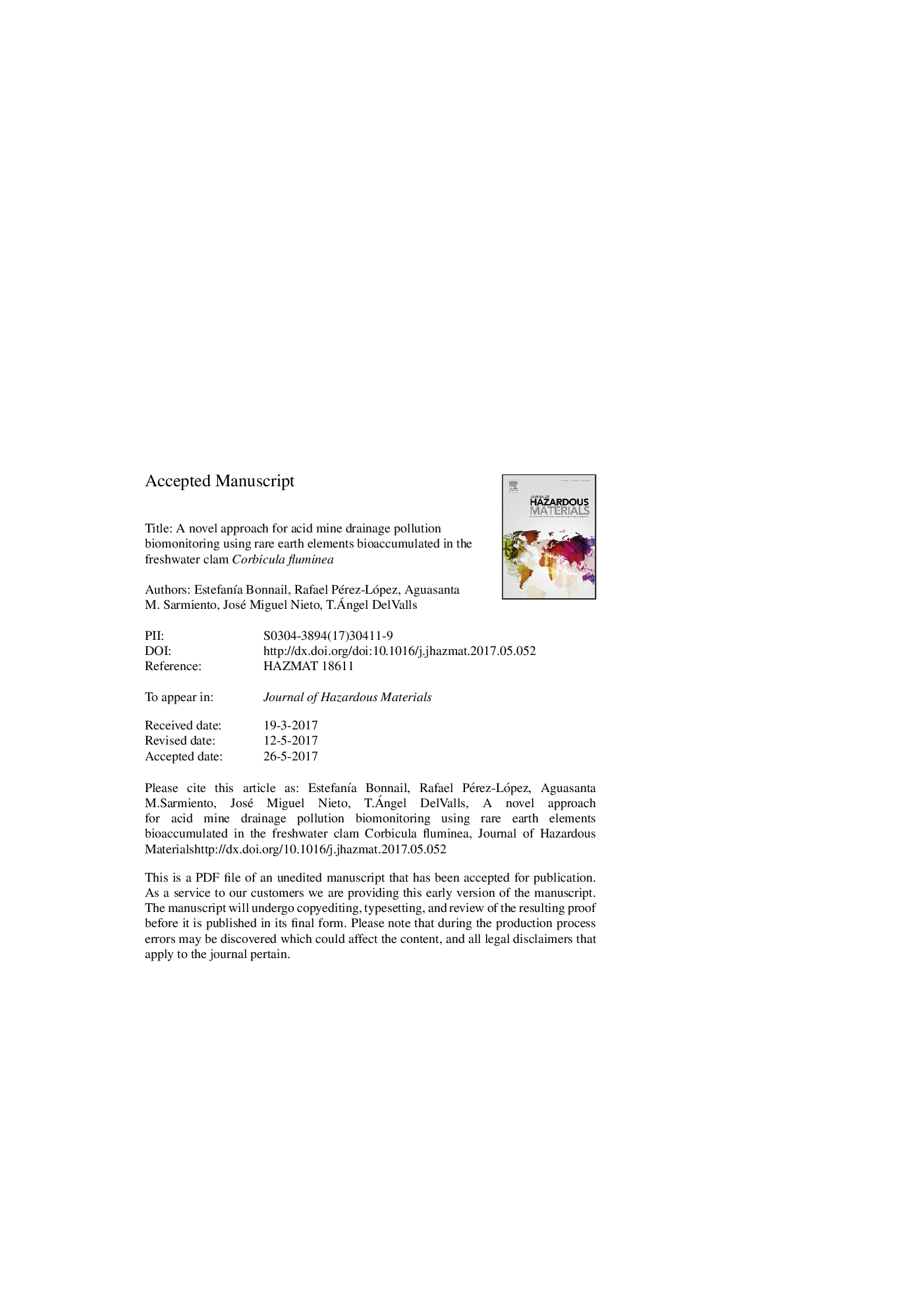| Article ID | Journal | Published Year | Pages | File Type |
|---|---|---|---|---|
| 4979565 | Journal of Hazardous Materials | 2017 | 22 Pages |
Abstract
Results show significant bioaccumulation of rare earth elements in soft tissue of the clam after 14âdays of exposure to acid mine drainage contaminated sediment (ΣREE = 1.3-8 μg/g dw). Furthermore, it was possible to biomonitor different degrees of contamination based on rare earth elements in tissue. The pattern of this type of contamination describes a particular curve characterized by an enrichment in the middle rare earth elements; a homologous pattern (EMREE = 0.90) has also been observed when applied NASC normalization in clam tissues. Results of lanthanides found in clams were contrasted with the paucity of toxicity studies, determining risk caused by light rare earth elements in the Odiel River close to the Estuary. The current study purposes the use of clam as an innovative “bio-tool” for the biogeochemical monitoring of pollution inputs that determines the acid mine drainage networks affection.
Related Topics
Physical Sciences and Engineering
Chemical Engineering
Chemical Health and Safety
Authors
EstefanÃa Bonnail, Rafael Pérez-López, Aguasanta M. Sarmiento, José Miguel Nieto, T. Ángel DelValls,
